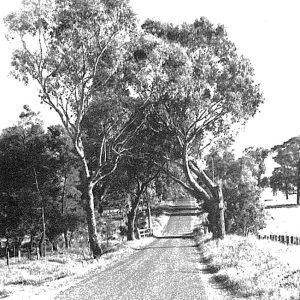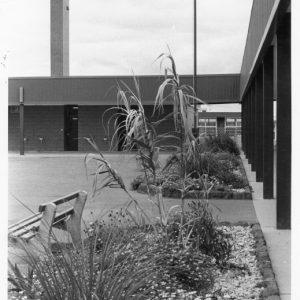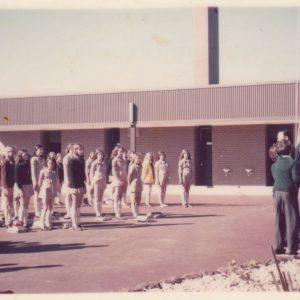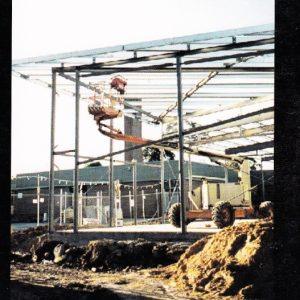On the 6th of February 1973, despite adverse weather conditions, Mooroolbark High School commenced operations with eighty-seven Form I students and six portable classrooms, fuelled by a clear sense of purpose and direction.
The rapid growth in the local area necessitated the establishment of Mooroolbark High School, as existing schools struggled to accommodate the increasing number of students seeking high school education. The school’s construction unfolded in four major stages over ten years on a twenty-two and a half acre site, formerly part of the local JP’s dairy farm. The new facility featured two main courtyards bordered by four permanent classroom blocks, a library, and an administration block.
From its modest start with 87 students, the school’s population expanded to 618 by 1977, the same year it introduced Form V with 64 students and a staff of 37. The inaugural Form VI class emerged in 1979, coinciding with a student population of 822 and 37 usable classrooms offering fourteen subjects. By 1983, the student body had surged to 955.
Six years after the completion of the main buildings, in October 1982, the ECA Centre and school buildings were officially inaugurated. In 1985, over 200 students enrolled in Year 7, and the school had 55 HSC students.
Additional enhancements to the exterior occurred, including the development of the southern quadrangle into a passive recreation area in 1992. The same year witnessed the establishment of a third computer laboratory and the computerization of the library system.
Mooroolbark High School underwent a name change in the 1990s, becoming Mooroolbark Heights Secondary College. In 1993, the decision was made to remain a stand-alone Year 7-12 school, retaining individual status along with a new logo and uniform change, replacing the previous green and brown with navy and bottle green. The student population grew to nearly 1300.
In 1999-2000, a new technology wing was added to the College, complementing the department’s laptop program for teachers, positioning the College as well-equipped for the challenges of a rapidly evolving technological landscape. The College Charter laid the foundation for high standards, high expectations, and success in every program or initiative.
With a substantial increase in Year 7 numbers supporting the new direction, the school officially renamed to Mooroolbark College in 2004. In 2004, alongside six other outer eastern schools, the College received a multi-million dollar grant as a leading school for developing an eLearning Community. The Innovation and Excellence Project allowed students and teachers to collaborate with those from local feeder primary schools, leading to the formation of The Red Earth Cluster. In 2009, the school transformed the role of Houses, moving beyond just sports groups to a wider responsibility. Form Assemblies were replaced by Home Groups based on the Houses, adopting a vertical structure with students from Years 7 to 12.
In 2011, a highly successful iPad program was introduced to Year 7, with teachers and students mutually benefiting from the initiative. The program’s success led to Mooroolbark hosting tours for other Melbourne schools eager to understand the reasons behind its effectiveness.
In 2013, a new Year 12 study centre opened for Year 12 students, providing a quiet working environment with nearby classrooms, a large screen for announcements, and quick access to VCE and VCAL coordinators.
Under the leadership of Ann Stratford the College implemented core values following extensive collaboration with staff, students and parents. The College embraces the core values of Compassion, Endeavour, Respect and Resilience. These improvements strengthened a sense of community, where students, teachers, staff, and parents worked together to create an inclusive and nurturing environment.
With the collaboration of students, staff and local Indigenous Elders and with the permission of the Wurundjeri Land Council the College developed and adopted the new house name in Woiwurrung language with Green House becoming Darrang (Tree), Red House becoming Biik (Earth), Blue House becoming BAAN (Water) and Yellow House becoming Ngawan (Sun).
The College has undergone a remarkable transformation following a capital works grant of $7 Million and locally raised funds. The redevelopment included building a Discovery Centre, Wellbeing and Learning Centre, Administration Wing, and extensive landscaping, which provides opportunities for outdoor learning and recreation, further extending the educational experiences of the school’s community.
The modernisation also included updating classrooms to equip them with cutting-edge technology and collaborative spaces that encourage innovative thinking.
Principals
- 1973–1984: Jack Everson
- 1984–1992: Max Burgess
- 1992–1994: Russell Harrison (Acting Principal)
- 1994–2001: Graham Kingsland
- 2002–2007: Geoffrey Flett
- 2008–2015: Simon Reid
- 2016–current: Ann Stratford

























